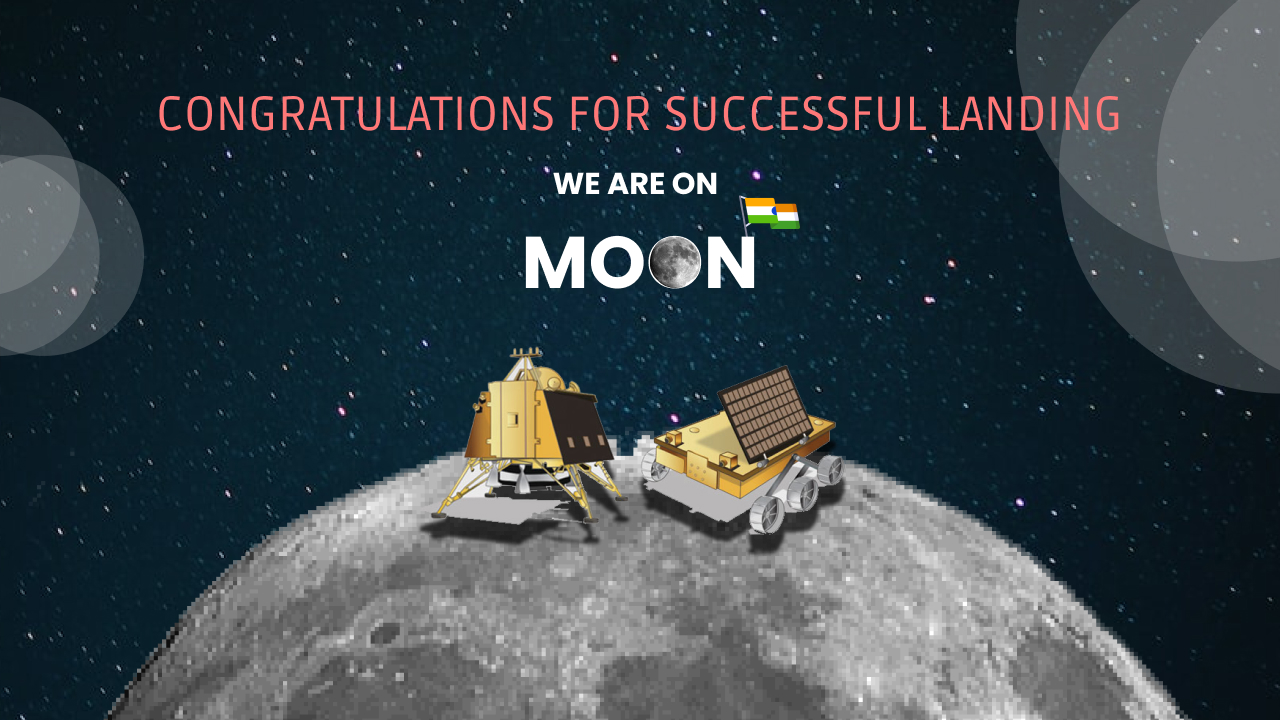- The Dual Mission: Orbiter, Lander, and Rover
- Launch and Orbital Insertion
- Vikram Lander and Pragyan Rover
- Chandrayaan-2 Orbiter's Ongoing Mission
- Scientific Contributions
The Dual Mission: Orbiter, Lander, and Rover:
Chandrayaan-2 was India's second lunar exploration mission, launched by the Indian Space Research Organisation (ISRO). It was a dual mission, consisting of an orbiter, a lander (Vikram), and a rover (Pragyan). The mission aimed to build on the success of Chandrayaan-1 and further India's lunar exploration efforts by conducting in-situ scientific experiments on the lunar surface.
Launch and Orbital Insertion:
- Launch: Chandrayaan-2 was launched on July 22, 2019, from the Satish Dhawan Space Centre in Sriharikota, India, using a GSLV Mk III-M1 rocket.
- Orbital Insertion: After launch, the spacecraft journeyed to the Moon and successfully entered lunar orbit. The orbiter was placed in a circular orbit around the Moon, while the Vikram lander and Pragyan rover prepared for descent.
Vikram Lander and Pragyan Rover:
- Vikram Lander: The Vikram lander was designed to make a soft landing on the lunar south pole. Unfortunately, during its descent on September 6, 2019, it lost communication with ISRO just moments before landing, and its status remains uncertain.
- Pragyan Rover: The Pragyan rover was designed to deploy from the Vikram lander and explore the lunar surface. However, due to the loss of contact with the lander, the rover's mission was also affected, and it remains inside the lander.
Chandrayaan-2 Orbiter's Ongoing Mission:
The Chandrayaan-2 orbiter continues to orbit the Moon and conduct scientific observations. It carries a suite of instruments that are designed to study the lunar surface, exosphere, and provide valuable data for future lunar missions. The orbiter is equipped with high-resolution cameras and various scientific instruments to carry out its mission.
Scientific Contributions:
The Chandrayaan-2 mission has made several scientific contributions despite the setbacks faced by the Vikram lander and Pragyan rover:
- Lunar Surface and Terrain Mapping: The orbiter has provided high-resolution images and maps of the lunar surface, helping scientists better understand its topography and geological features.
- Discovering Water Ice: Similar to Chandrayaan-1, Chandrayaan-2's orbiter has confirmed the presence of water ice on the Moon, particularly in the polar regions. This discovery has significant implications for future lunar exploration and potential resource utilization.
- Studying the Lunar Exosphere: The orbiter's instruments have been used to study the Moon's exosphere, a thin, almost vacuum-like region surrounding the Moon, helping scientists gain insights into its composition and variations.
- Remote Sensing Data: The orbiter has continuously transmitted data to Earth, contributing to our understanding of the Moon's geology, mineral composition, and other scientific parameters.
while the Vikram lander and Pragyan rover encountered challenges, the Chandrayaan-2 orbiter has continued to function and provide valuable scientific data, making important contributions to lunar research and furthering India's presence in lunar exploration.
Chandrayaan-3 and Missions
- Chandrayaan-3: The Success Mission
- Potential Complete Lunar Exploration Plans
- International Collaborations

